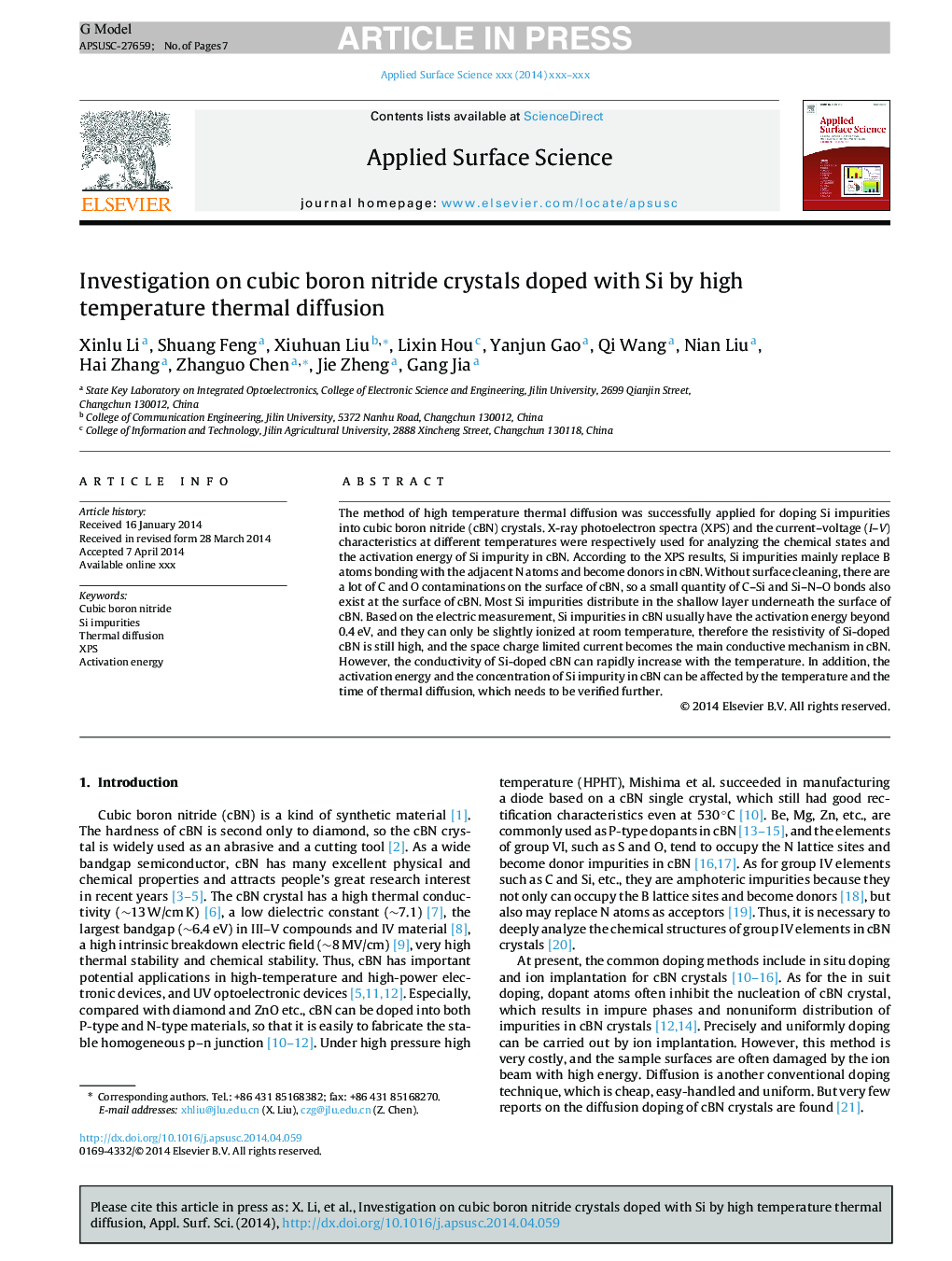| Article ID | Journal | Published Year | Pages | File Type |
|---|---|---|---|---|
| 5350051 | Applied Surface Science | 2014 | 7 Pages |
Abstract
The method of high temperature thermal diffusion was successfully applied for doping Si impurities into cubic boron nitride (cBN) crystals. X-ray photoelectron spectra (XPS) and the current-voltage (I-V) characteristics at different temperatures were respectively used for analyzing the chemical states and the activation energy of Si impurity in cBN. According to the XPS results, Si impurities mainly replace B atoms bonding with the adjacent N atoms and become donors in cBN. Without surface cleaning, there are a lot of C and O contaminations on the surface of cBN, so a small quantity of C-Si and Si-N-O bonds also exist at the surface of cBN. Most Si impurities distribute in the shallow layer underneath the surface of cBN. Based on the electric measurement, Si impurities in cBN usually have the activation energy beyond 0.4Â eV, and they can only be slightly ionized at room temperature, therefore the resistivity of Si-doped cBN is still high, and the space charge limited current becomes the main conductive mechanism in cBN. However, the conductivity of Si-doped cBN can rapidly increase with the temperature. In addition, the activation energy and the concentration of Si impurity in cBN can be affected by the temperature and the time of thermal diffusion, which needs to be verified further.
Related Topics
Physical Sciences and Engineering
Chemistry
Physical and Theoretical Chemistry
Authors
Xinlu Li, Shuang Feng, Xiuhuan Liu, Lixin Hou, Yanjun Gao, Qi Wang, Nian Liu, Hai Zhang, Zhanguo Chen, Jie Zheng, Gang Jia,
